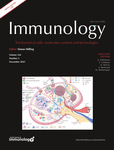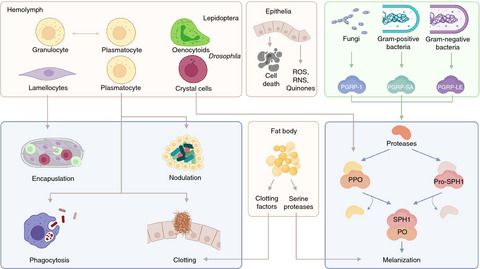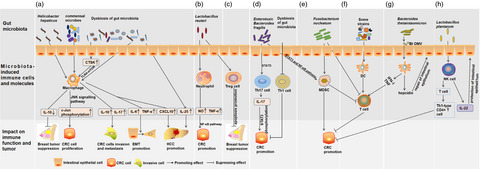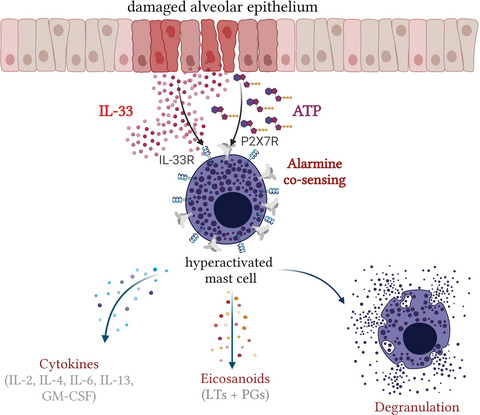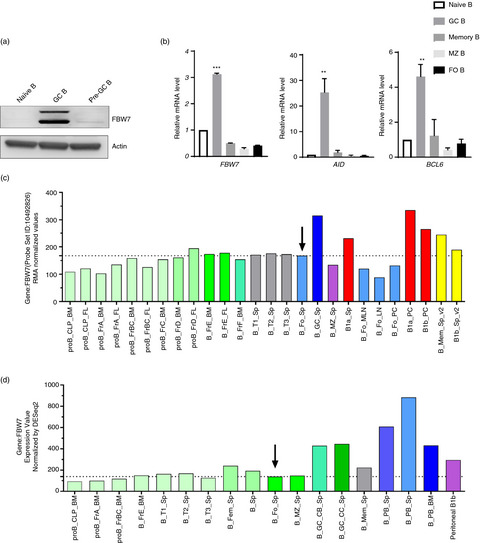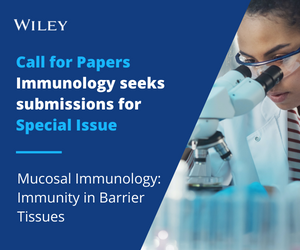Journal list menu
Export Citations
Download PDFs
ISSUE INFORMATION
EDITORIAL
A specialist antigen storage compartment in dendritic cells to sustain cross-presentation
- Pages: 399-400
- First Published: 15 October 2021
REVIEWS
Haemocyte-mediated immunity in insects: Cells, processes and associated components in the fight against pathogens and parasites
- Pages: 401-432
- First Published: 07 July 2021
Unboxing dendritic cells: Tales of multi-faceted biology and function
- Pages: 433-449
- First Published: 26 July 2021
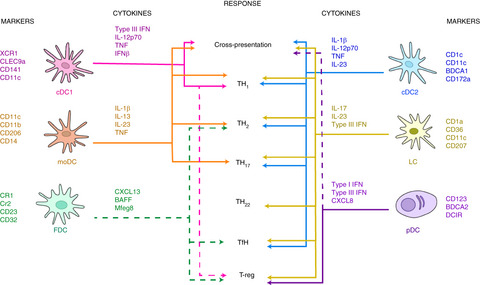
Recent studies of phenotype and gene expression at the single cell level have identified DC heterogeneity even within the same type, supporting the idea that DCs have evolved to greatly expand the flexibility of the immune system to react appropriately to a wide range of threats. This review is meant to serve as a quick and robust guide to understand the basic divisions of DC subsets and their role in the immune system. Throughout the text, we are using both fundamental and therapeutic lens to describe overlaps and distinctions and what this could mean for future research and therapies.
Ectopic lymphoid follicles in progressive multiple sclerosis: From patients to animal models
- Pages: 450-466
- First Published: 22 July 2021

ELFs are frequently found in the meninges of the deep sulci in about 40% of investigated progressive MS tissues. The typical structure of organized ELFs resembles the architecture of germinal centres in secondary lymphoid organs. In addition to compartmentalized B- and T-cell zones, ELFs also feature specialized TFH cells, which are in close contact to B cells (predominantly CD27+ memory B cells), as well as follicular dendritic cells (FDC), which are essential for B-cell differentiation and activation.
Diabetes and susceptibility to infections: Implication for COVID-19
- Pages: 467-475
- First Published: 11 June 2021
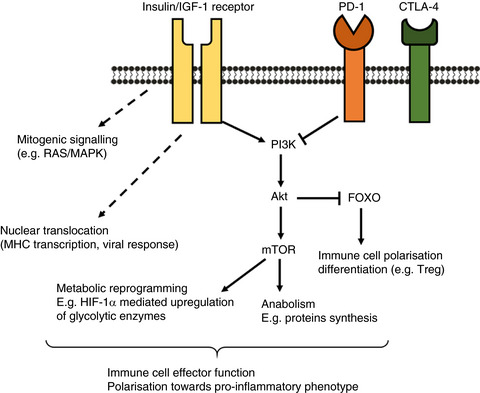
Recent studies have shown that insulin signalling plays a key role in mediating immune cell functions such as driving metabolic reprogramming in activated immune cells. Insulin may also antagonize the anti-inflammatory effect of immune checkpoint proteins and attenuate FOXO-mediated anti-inflammatory transcription in immune cells. Dysregulated insulin signalling in diabetes may thus contribute to the immune dysfunction that leads to increased susceptibility to various infections.
Interaction between intestinal microbiota and tumour immunity in the tumour microenvironment
- Pages: 476-493
- First Published: 29 July 2021
ORIGINAL ARTICLES
Distinct antigen uptake receptors route to the same storage compartments for cross-presentation in dendritic cells
- Pages: 494-506
- First Published: 10 June 2021
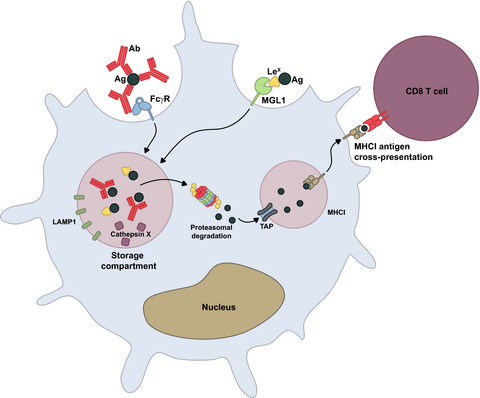
Antigens taken up by dendritic cells via Fcγ receptors or C-type lectin receptor MGL1 are routed towards the same endolysosomal compartments, which express LAMP1 and active cathepsin X. These compartments can conserve antigen for several days and serve as an antigen depot for prolonged antigen cross-presentation to CD8+ T cells.
B2M gene expression shapes the immune landscape of lung adenocarcinoma and determines the response to immunotherapy
- Pages: 507-523
- First Published: 11 June 2021
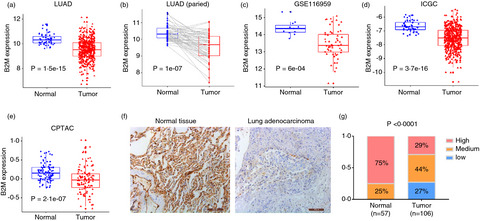
Anti-PD-1 immunotherapy has significantly improved the survival of patients with lung cancer, but drug resistance greatly limited its long-term benefits. We found that a defective B2M gene expression is the underlying mechanism of the resistance, and we proposed some potential strategies to improve the efficacy of anit-PD-1 immunotherapy and overcome the resistance.
Immune control of Mycobacterium tuberculosis is dependent on both soluble TNFRp55 and soluble TNFRp75
- Pages: 524-540
- First Published: 15 June 2021
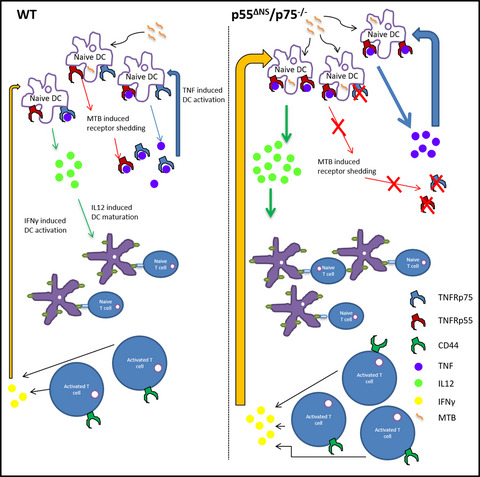
Tumour necrosis factor (TNF) signalling is required for host immunity against Mycobacterium tuberculosis (Mtb); however, TNF receptor shedding compromises effective immunity by reducing bioactive TNF through the formation of inactive complexes. Here, we show that soluble TNFRp55 is redundant for immune regulation during the chronic stages of a primary Mtb infection. However, TNFRp55 together with soluble TNFRp75 has a crucial role in immune regulation of reactivation of latent tuberculosis.
ATP/IL-33-triggered hyperactivation of mast cells results in an amplified production of pro-inflammatory cytokines and eicosanoids
- Pages: 541-554
- First Published: 17 June 2021
PD-1-induced proliferating T cells exhibit a distinct transcriptional signature
- Pages: 555-568
- First Published: 23 June 2021
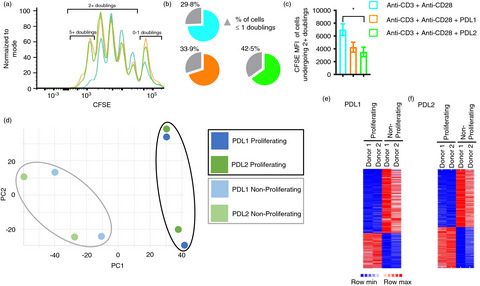
We have observed that CD4+ T cells stimulated through the T-cell receptor and PD-1 primarily do not proliferate; however, there is a population of cells that proliferates more than T-cell receptor stimulation alone. In this study, we have performed RNA sequencing and found that following PD-1 ligation the proliferating T cells showed an enrichment of genes associated with an activated state despite PD-1 signaling. Additionally, circulating follicular helper T cells were significantly more prevalent in the non-proliferating population, demonstrated by enrichment of the associated genes CXCR5, CCR7, TCF7, BCL6 and PRDM1 and validated at the protein level.
Interleukin-35 is a critical regulator of immunity during helminth infections associated with multiple sclerosis
- Pages: 569-586
- First Published: 01 July 2021
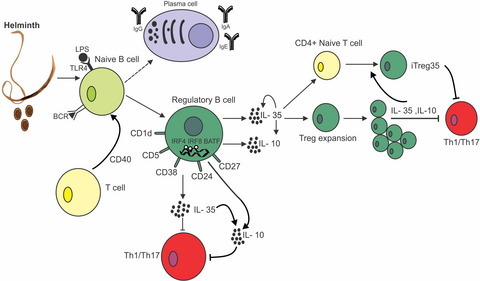
Helminth infections dampen MS disease activity as a result of regulatory B (Breg) and regulatory T (Treg) cells. Helminth antigens induce IL-35- and IL-10-producing Breg cells, either directly through TLR ligands or through BCR cross-linking and CD40 ligation. IL-35 exerts autocrine and paracrine effects, triggering IL-10 production and inhibiting Th1 and Th17 effector T-cell response.
Pathogen-induced inflammation is attenuated by the iminosugar MON-DNJ via modulation of the unfolded protein response
- Pages: 587-601
- First Published: 20 July 2021
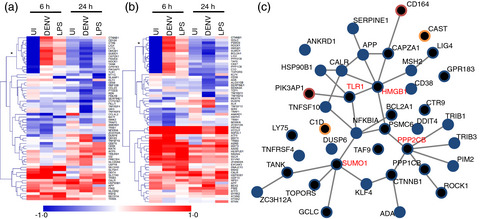
Iminosugars are a class of small molecule glycomimetics with distinct inhibition profiles for glycan processing enzymes based on stereochemistry. We report a distinct activity of iminosugars whereby modulation of the unfolded protein response occurs as a result of inhibition of ER-resident glycoprotein processing enzymes. This results in decreased inflammation arising from diverse pathogens including replicating virus, bacterial endotoxin and fungal antigen.
Vascular and immunopathological role of Asymmetric Dimethylarginine (ADMA) in Experimental Autoimmune Encephalomyelitis
- Pages: 602-616
- First Published: 26 July 2021
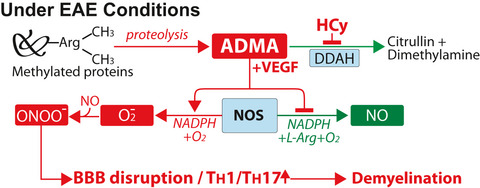
In EAE mice, the blood level of ADMA, an endogenous inhibitor/uncoupler of nitric oxide synthases, is increased in parallel to clinical disease. ADMA induces EAE disease in MOG-immunized mice by disrupting BBB and by enhancing TH1/TH17-mediated autoimmune responses. Overall, these data document the vascular and immunopathogenic roles of ADMA in EAE.
Critical roles of the E3 ubiquitin ligase FBW7 in B-cell response and the pathogenesis of experimental autoimmune arthritis
- Pages: 617-636
- First Published: 05 August 2021
Mutations in the binding site of TNFR1 PLAD reduce homologous interactions but can enhance antagonism of wild-type TNFR1 activity
- Pages: 637-654
- First Published: 07 August 2021
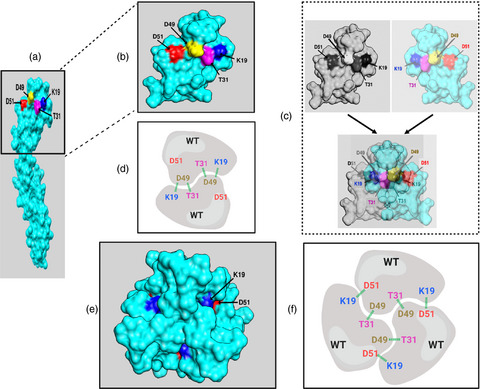
We generated recombinant wild-type (WT) PLAD of TNFR1 and mutant forms with single alanine substitutions of amino acid residues thought to be critical for the formation of homologous dimers and/or trimers of PLAD (K19A, T31A, D49A and D52A). Unlike WT PLAD, the mutated PLADs showed little or no homologous interactions, confirming the importance of particular amino acids as contact residues in the PLAD binding region. However, as with WT PLAD, the mutated PLADs functioned as antagonists of TNF-induced TNFR1 activity leading to induction of cell death or NF-kappaB signalling.




